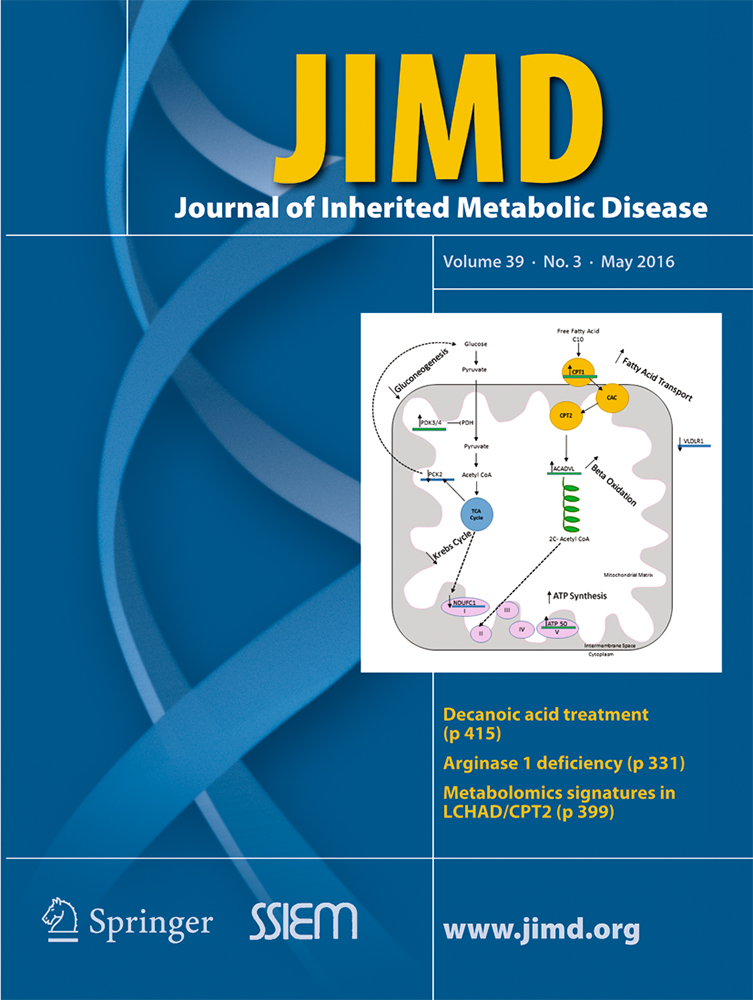The natural history of elevated tetradecenoyl-L-carnitine detected by newborn screening in New Zealand: implications for very long chain acyl-CoA dehydrogenase deficiency screening and treatment
Communicated by: Verena Peters
Abstract
Very long chain acyl-CoA dehydrogenase deficiency (VLCADD, OMIM #201475) has been increasingly diagnosed since the advent of expanded newborn screening (NBS). Elevated levels of tetradecenoyl-L-carnitine (C14:1) in newborn screening blood spot samples are particularly common in New Zealand, however this has not translated into increased VLCADD clinical presentations. A high proportion of screen-positive cases in NZ are of Maori or Pacific ethnicity and positive for the c.1226C > T (p.Thr409Met) ACADVL gene variant. We performed a retrospective, blinded, case–control study of 255 cases, born between 2006 and 2013, with elevated NBS C14:1 levels between 0.9 and 2.4 μmol/L, below the NZ C14:1 notification cut-off of 2.5 μmol/L. Coded healthcare records were audited for cases and age- and ethnicity- matched controls. The clinical records of those with possible VLCADD-related symptoms were reviewed. The follow-up period was 6 months to 7 years. Two of 247 cases (0.8 %) had possible VLCADD-like symptoms while four of 247 controls (2 %) had VLCADD-like symptoms (p = 0.81). Maori were overrepresented (68 % of the cohort vs 15 % of population). Targeted analysis of the c.1226 locus revealed the local increase in screening C14:1 levels is associated with the c.1226C > T variant (97/152 alleles tested), found predominantly in Maori and Pacific people. There was no increase in clinically significant childhood disease, irrespective of ethnicity. The study suggests that children with elevated C14:1, between 0.9-2.4 μmol/L, on NBS are at very low risk of clinically significant childhood disease. A minimally interventional approach to managing these patients is indicated, at least in the New Zealand population.
Conflict of interest
None.




